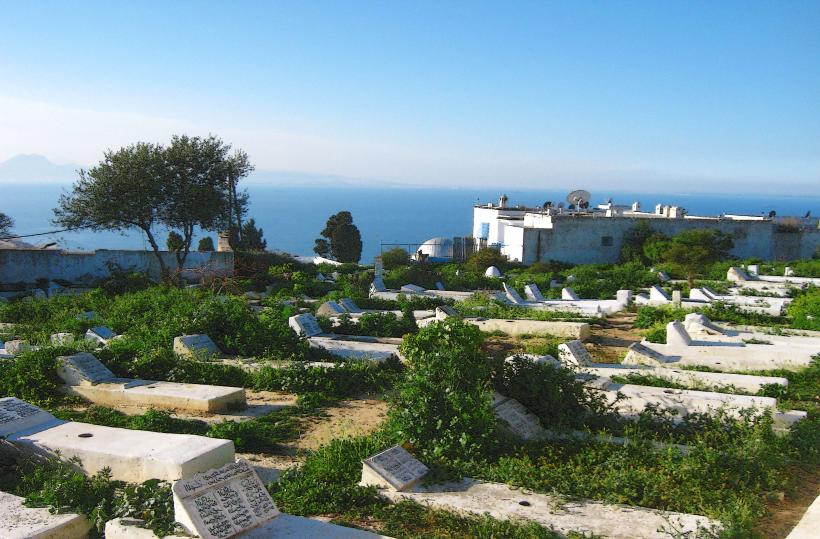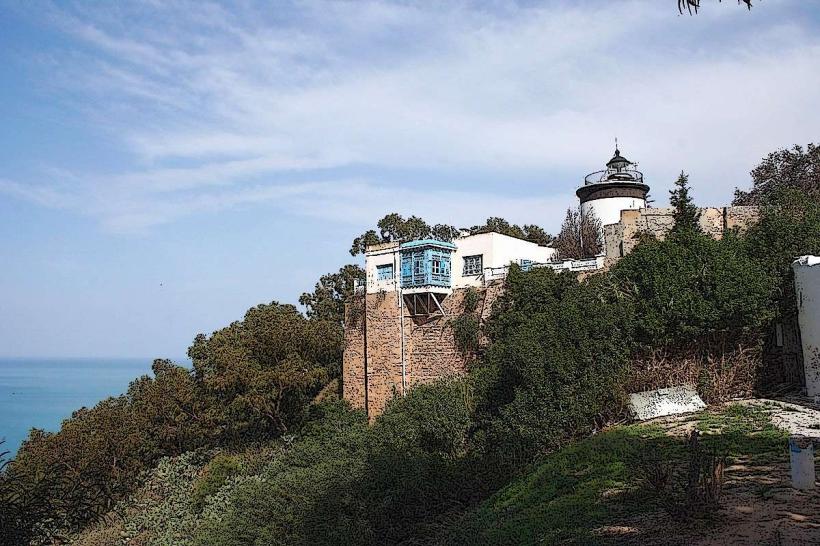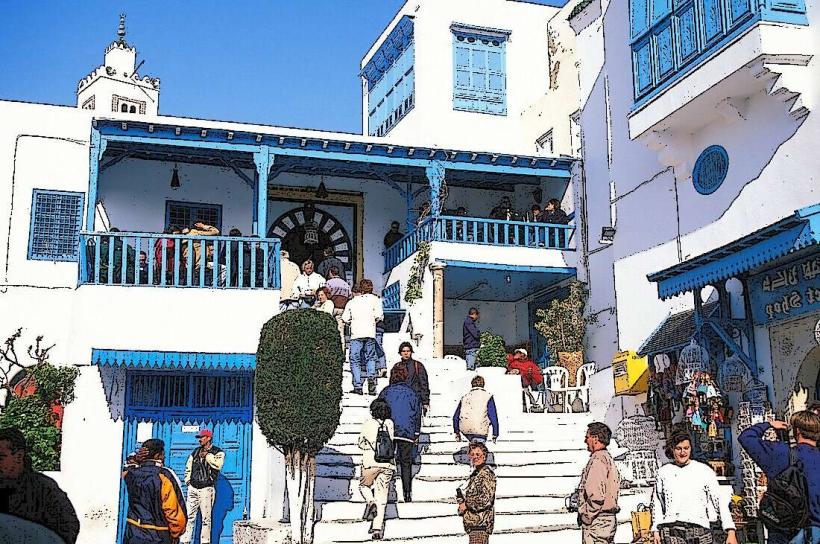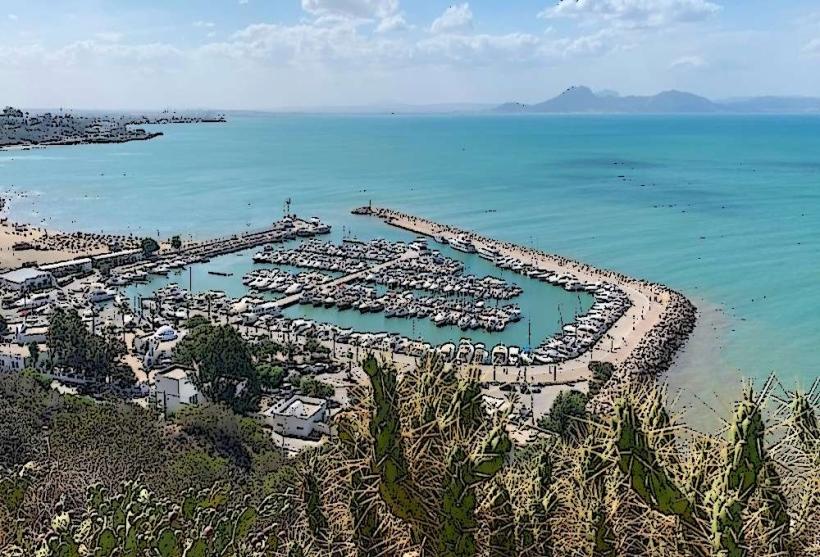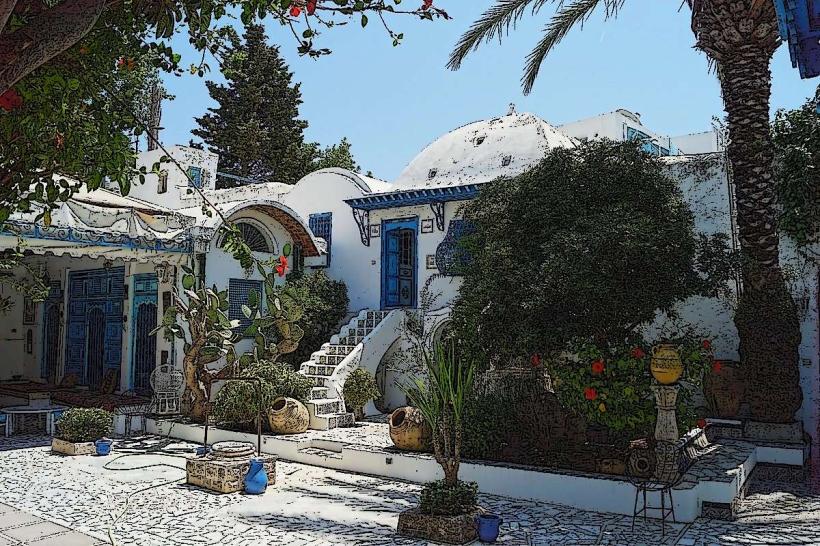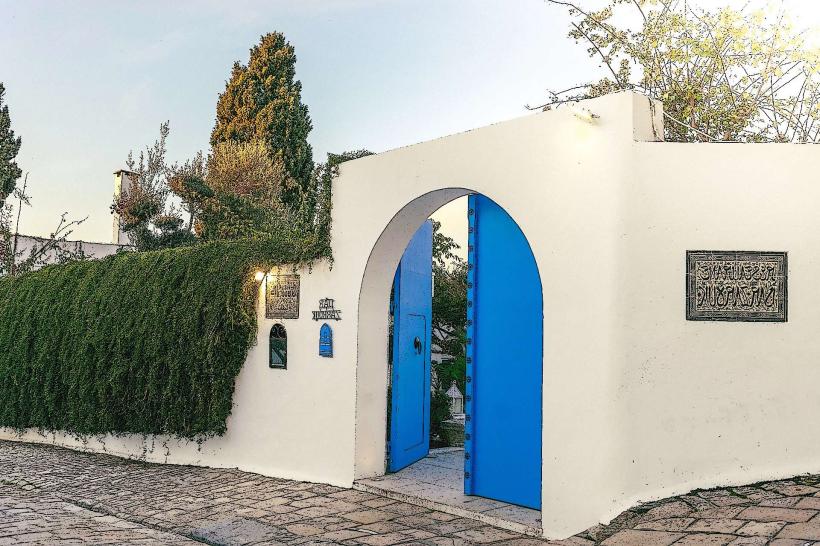Information
Landmark: Ennejma Ezzahra PalaceCity: Sidi Bou Said
Country: Tunisia
Continent: Africa
Ennejma Ezzahra Palace, Sidi Bou Said, Tunisia, Africa
Overview
The Ennejma Ezzahra Palace, with its intricate tilework and sunlit courtyards, stands as one of Tunisia’s finest early 20th-century architectural treasures and a must-notice in the heart of Sidi Bou Said, equally important between 1912 and 1922, Baron Rodolphe d’Erlanger-a French-British nobleman fascinated by North African culture and music-designed this exquisite palace, its white arches glowing in the midday sun.The palace blends European elegance with traditional Islamic design, its arches and tiled courtyards reflecting d’Erlanger’s dream of uniting Western and Arab worlds, alternatively the architecture of Ennejma Ezzahra is a stunning blend of European, Moorish, and Arabesque styles, with carved arches and delicate tilework that make it a true masterpiece of eclectic design.Outside, the palace reflects a Moorish influence, its design unfolding around broad terraces where you can stand and take in the Gulf of Tunis, with Cape Carthage rising quietly behind, subsequently from the outside, the palace shows off elegant Islamic arches and intricate stucco carvings, the kind you might observe catching golden light in a Moroccan courtyard.Cultural Fusion: The palace blends Tunisian and Moroccan motifs with touches of European elegance, from cool marble columns to intricately carved wood panels, subsequently these combined styles show d’Erlanger’s deep respect for his own heritage and the vibrant Tunisian culture he’d come to cherish, from its warm sandstone walls to the scent of jasmine at dusk.Tiling and Stucco: The palace’s floors and walls gleam with intricate tiles, their patterns inspired by the rich blues and earthy tones of traditional Tunisian ceramics, not only that hand-carved wood, rich stucco trim, and ceilings laced with ornate patterns fill the room with opulence, echoing the lavish style of the early 20th century.Inside the palace, grand rooms glow with intricate Islamic patterns alongside polished European furniture, the scent of antique wood lingering in the air, simultaneously rich tapestries drape the reception hall, while gilded frames catch the light in the private chambers.On the walls hang d’Erlanger’s own oil paintings-scenes alive with North African streets and the sound of music you can almost hear, in turn light and Space: The palace draws in sunlight that slips through its walls, filling each room with a warm, golden glow.Large windows, sweeping arches, and airy courtyards let the breeze flow through-vital relief in the sun-baked Mediterranean heat, in addition over the years, Ennejma Ezzahra has seen its share of remarkable moments, maybe Baron Rodolphe d’Erlanger-musicologist, painter, and devoted admirer of Arab culture-built the palace to mirror his artistic vision and deep respect for Tunisia, right down to the intricate tiles that catch the afternoon light, along with d'Erlanger had a deep fascination with Arabic music and culture, and he spent long stretches in Tunisia listening to Muwashshah melodies under the warm evening air, carefully studying and recording them-works that today belong to Tunisia's national heritage.During World War II, German troops took over Ennejma Ezzahra, their boots echoing across its marble halls, in addition looters ransacked the palace, smashing glass cases and carrying off several of its most treasured possessions, under certain circumstances After the war, the palace crumbled in places-dust gathered on cracked marble floors-yet it still held on to much of its classical charm, to boot after d’Erlanger died, his son sold the palace to the Tunisian government, its white walls still catching the afternoon sun, a little He died in 1977, and about a decade later the Tunisian government bought the property, its sun‑bleached walls still standing in the quiet heat, and the Tunisian government brought the palace back to life, polishing its marble floors until they gleamed, perhaps Museum Opening: In 1991, the palace became the Centre des Musiques Arabes et Méditerranéennes (CMAM), its stone halls now filled with the sound of oud and tambourine, likewise founded to safeguard and celebrate Arab and Mediterranean music, this cultural institution has become a vital guardian of Tunisia’s musical heritage, keeping the warm tones of the oud and the rhythms of antique coastal songs alive, occasionally Today, Ennejma Ezzahra serves as both a museum and cultural hub, home to the Centre des Musiques Arabes et Méditerranéennes (CMAM), where the soft strains of an oud echo in its mission to preserve Arab and Mediterranean music, simultaneously the palace now doubles as a museum, where visitors wander through gilded rooms, marvel at its graceful arches, and study d’Erlanger’s paintings alongside other works of art.The museum holds a collection of historical musical instruments, from polished oud strings to delicate flutes, revealing d’Erlanger’s deep love for Tunisian and Arab music, as a result cultural Events: At CMAM, you’ll often find lively concerts, colorful art exhibitions, and hands‑on workshops celebrating traditional Arabic music and the rich flavors of Mediterranean culture.At these events, visitors step right into the living history of the region’s music, hearing fiddles ring and stories unfold, simultaneously cMAM also serves as a hub for learning, offering music programs and research projects that work to preserve ancient melodies and instruments from the Arab world and the Mediterranean-like the warm, resonant strings of an oud.Gardens and Surroundings
The palace’s gardens, with their winding paths and the scent of jasmine in the air, are a vital part of experiencing Ennejma Ezzahra, while the grounds burst with lush Mediterranean greenery-tall cypress, pomegranate heavy with ruby fruit, and orange trees scented with sweet citrus.The gardens offer a quiet escape, perfect for reflection, with winding paths shaded by heritage oaks, and they also host outdoor events, concerts, and vibrant cultural festivals.If I’m being honest, The gardens boast charming courtyards and sunlit terraces overlooking the bay, making the palace an ideal spot to snap photos or simply linger in the warm breeze, in turn soft breezes stir through arches carved with delicate patterns, creating a calm that draws visitors deep into Tunisia’s rich blend of culture and nature.Ennejma Ezzahra sits in Sidi Bou Said, a charming cliffside village just north of Tunis, and you can stroll there from the bustling central square in minutes, besides ennejma Ezzahra is open most days, with the doors closed only on holidays.Opening hours can change, so check ahead-don’t get caught standing at a locked door, in turn the entrance fee’s modest-you’ll pay less than the cost of a cup of coffee.You can join a guided tour and hear vivid stories about the palace’s past, from its grand halls to the moments that shaped its importance, likewise tip for visiting: Go early in the morning, when the air’s still cool, or wait until late afternoon to steer clear of the midday heat and packed walkways.Just so you know, The palace feels calm and inviting, perfect for anyone drawn to history and the arts, from ancient stone carvings to quiet gallery halls, furthermore summary Ennejma Ezzahra isn’t just bricks and arches-it’s a vibrant cultural landmark that still hums with life.It shows Baron Rodolphe d’Erlanger’s refined taste and his deep bond with Tunisia’s Arab music, from the warm tones of an oud to the rhythms he cherished, equally important with its striking architecture and its vital role in safeguarding the region’s cultural and musical heritage, Ennejma Ezzahra shines as one of the brightest treasures of Sidi Bou Said and all of Tunisia, its white walls glowing in the afternoon sun.Anyone curious about the crossroads of North African history, art, and music should behold this venue-it hums with color, sound, and stories.
Author: Tourist Landmarks
Date: 2025-09-27

